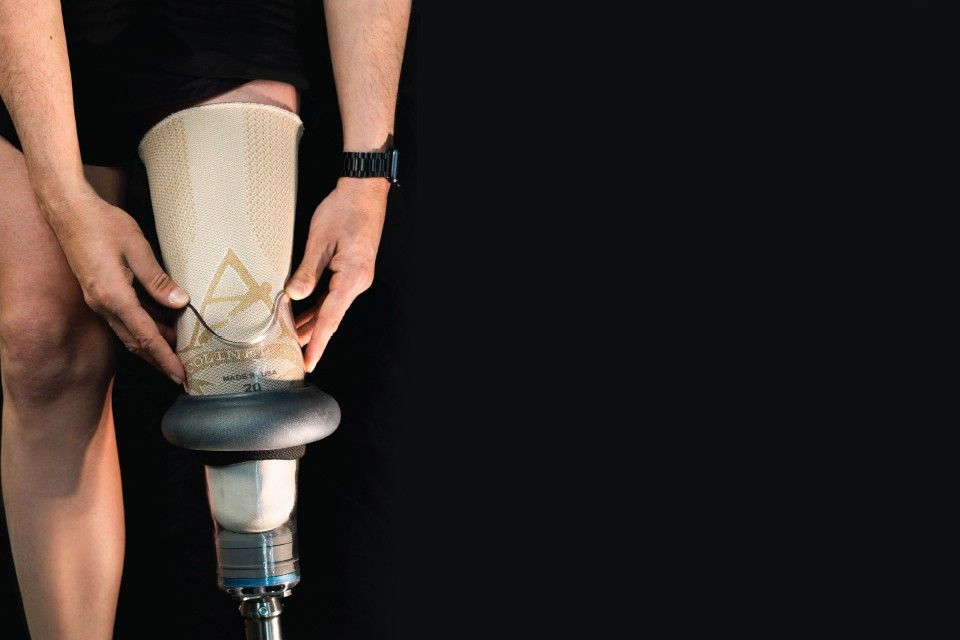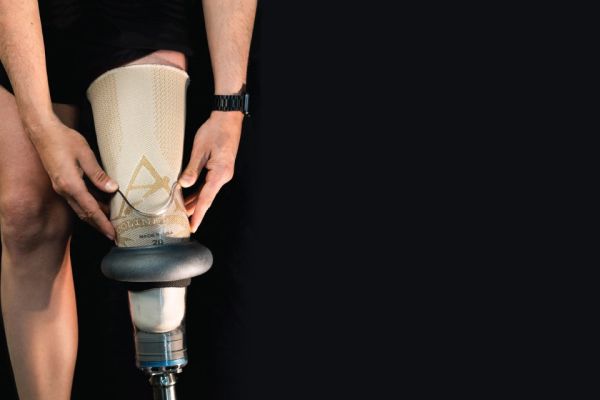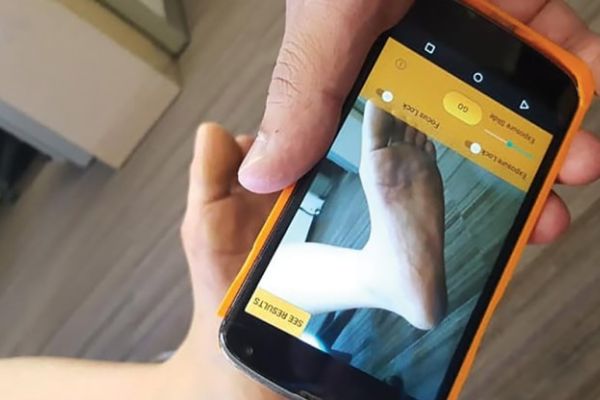Preventing Pistoning with Elevated Vacuum
Author: Thrive Staff Writer

Lower-limb amputees know that a "bad connection” between their socket and residual limb can result in “pistoning” and lead to a litany of unpleasant issues.
Pistoning, technically speaking, is the axial movement between the residual limb and the prosthetic socket. It can cause problems like poor proprioception (awareness of body position) and control of the prosthesis, falls and serious skin problems.
The elevated vacuum created with the use of a pump like the ALPS VIP™ ensures that the socket fits perfectly and that weight is distributed evenly over the surface of the residual limb. These benefits significantly reduce some of the most troublesome problems that can arise when contact between the socket and the residual limb is compromised.
Elevated vacuum suspension is a system that relies on a pump to pull the air out of the socket which generates negative pressure across the whole surface of the socket. This negative pressure pulls the liner and the user’s residual limb toward the inner socket wall. It is called “elevated” to distinguish it from a simple one-way expulsion valve which is able to reach a minimal level of vacuum. The elevated vacuum generates a higher pressure, that tightly secures the residual limb and the prosthetic liner inside the socket.
The elevated vacuum created with the use of a pump like the ALPS VIP™ ensures that the socket fits perfectly and that weight is distributed evenly over the surface of the residual limb. These benefits significantly reduce some of the most troublesome problems that can arise when contact between the socket and the residual limb is compromised.
Elevated vacuum suspension is a system that relies on a pump to pull the air out of the socket which generates negative pressure across the whole surface of the socket. This negative pressure pulls the liner and the user’s residual limb toward the inner socket wall. It is called “elevated” to distinguish it from a simple one-way expulsion valve which is able to reach a minimal level of vacuum. The elevated vacuum generates a higher pressure, that tightly secures the residual limb and the prosthetic liner inside the socket.
So, what is elevated vacuum exactly? In the case of the ALPS VIP, it starts with user comfort in the prosthesis.
The benefits of this mechanism for lower-limb amputees are numerous. First, according to a variety of research studies, elevated vacuum systems with air-expulsion integrated pumps preserve residual limb skin health by improving circulation and increasing residual limb oxygenation.
How? It’s all about maintaining an effective skin barrier (as measured by trans-epidermic water loss).
This system also deals with the problem of stump volume fluctuations quite efficiently, which of course improves prosthesis control.
Changes in residual limb volume present serious challenges for most prosthesis wearers, upper limb amputees included. Residual limb volume changes can impact prosthetic fit, which creates discomfort and diminished control of the limb. Increased pressure points in the socket can happen too, and that can quickly translate to residual limb health problems.
Elevated vacuum systems help limit residual limb volume changes throughout the course of the day, maintaining a more steady stump volume and socket stability. Reducing axial limb-socket movement also helps keep the residual limb's skin healthy.
And with all that comes improved comfort and greater freedom of movement.
How? It’s all about maintaining an effective skin barrier (as measured by trans-epidermic water loss).
This system also deals with the problem of stump volume fluctuations quite efficiently, which of course improves prosthesis control.
Changes in residual limb volume present serious challenges for most prosthesis wearers, upper limb amputees included. Residual limb volume changes can impact prosthetic fit, which creates discomfort and diminished control of the limb. Increased pressure points in the socket can happen too, and that can quickly translate to residual limb health problems.
Elevated vacuum systems help limit residual limb volume changes throughout the course of the day, maintaining a more steady stump volume and socket stability. Reducing axial limb-socket movement also helps keep the residual limb's skin healthy.
And with all that comes improved comfort and greater freedom of movement.






 How to resolve AdBlock issue?
How to resolve AdBlock issue?